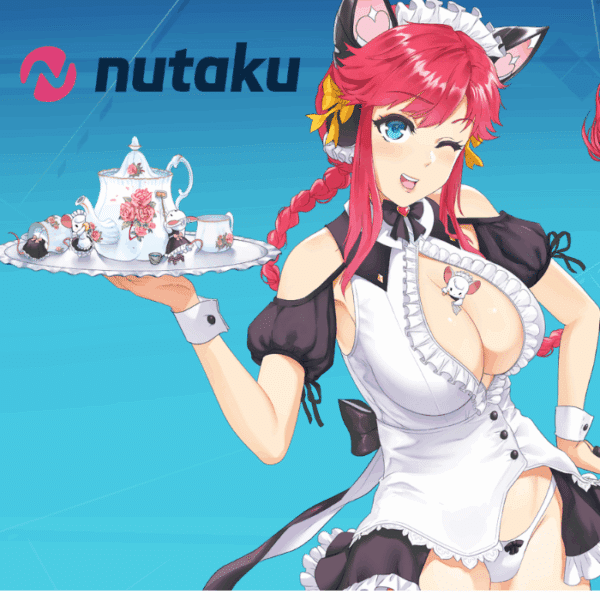Hentai
Showing all 3 results
Welcome to our Hentai Category Page
If you’ve landed here, you’re likely interested in exploring hentai or perhaps looking for the best adult animation content. Whether you’re here to learn more about hentai as a genre or to discover some exciting hentai-themed entertainment, you’re in the right place!
Hentai, a Japanese style of adult animation, has become a popular niche in adult entertainment around the world. Known for its wide range of artistic styles and storylines, it covers everything from fantasy and sci-fi to the more unconventional and imaginative. Here, we’ll provide a comprehensive guide to hentai, including its origins, common themes, and what to look for in ethical, legal content.
Ready to dive into the world of hentai? Let’s begin!
1. What Is Hentai?
Hentai is a Japanese term that refers to sexually explicit animated or illustrated content, often involving exaggerated depictions of characters, situations, and fantasy scenarios. It can range from romantic or comedic to darker and more intense themes. The key distinction between hentai and traditional pornography is that hentai is a form of animation or illustration, not live-action.
Though the term “hentai” is commonly used worldwide to refer to adult anime, in Japan, the term is more often associated with perverse or abnormal sexual content, while “ero-manga” (erotic comics) or “adult animation” might be more commonly used to describe adult-themed animated material.
2. The Origins of Hentai
Hentai originated in Japan during the late 19th century, evolving from the country’s rich history of erotic art. Early examples of erotic art in Japan, known as shunga, were woodblock prints and paintings that depicted explicit sexual acts. The modern form of hentai as we know it began emerging in the early 20th century as Japan’s animation industry grew, with adult-themed animated films and illustrations appearing during the 1980s.
As the internet became more accessible, hentai gained worldwide popularity, and today it’s one of the most widely consumed forms of adult entertainment globally. It is important to understand that, like all forms of adult content, hentai must be created and consumed responsibly and ethically.
3. Common Themes and Genres in Hentai
Hentai is known for its broad range of themes and genres, catering to various tastes and fetishes. Some of the most popular themes include:
- Fantasy and Sci-Fi: Hentai often explores imaginative and fantastical worlds, such as supernatural creatures, magic, or futuristic settings.
- Romantic and Erotic: Some hentai features more romantic and intimate storytelling, focusing on the connection between characters before moving into sexual exploration.
- Fetishes and Kinks: Hentai can include a wide array of fetishes, from domination and submission to more niche interests. These works are often created to cater to very specific desires, which is why the genre has such a diverse fanbase.
- Parody and Humor: Hentai can also parody popular anime, manga, or pop culture, often adding adult content for comedic or dramatic effect.
4. The Art of Hentai: Style and Animation Techniques
One of the defining features of hentai is its art style. The medium of animation allows for exaggerated, larger-than-life depictions of characters and sexual scenes, often creating highly stylized visuals.
Common animation techniques include:
- Big Eyes and Hyper-Exaggerated Facial Expressions: This is a signature style in Japanese anime and manga, used in hentai as well to emphasize emotional and physical reactions.
- Fluid Animation: Hentai often uses high-quality animation to bring scenes to life, allowing for more expressive and intense visual storytelling.
- Artistic Freedom: As a genre that exists in the realm of fantasy, hentai allows artists to create worlds and characters that wouldn’t be possible in live-action pornography.
5. Legal and Ethical Considerations in Hentai
Age Verification
As with all adult content, it’s crucial that hentai follows legal standards and ensures that all depicted characters are above the age of consent, typically 18 years or older. Legal hentai is created within the boundaries of local laws and regulations governing adult content.
Ethical Production
Ethical hentai production ensures the well-being and consent of the creators and performers. It is vital to support creators who respect their workers and promote healthy, consensual, and respectful adult content.
6. Health and Safety in Adult Animation
Mental Health
While hentai doesn’t pose the same physical health risks as live-action pornography, it’s still important to be aware of how consuming this kind of content affects your mental and emotional well-being. Be mindful of how your consumption of adult entertainment influences your real-life relationships and views on intimacy.
Ethical Consumption
Always choose legal, ethical sources for hentai content. This means seeking out creators who prioritize safe and consensual production, and avoiding pirated or non-consensual content.
7. Hentai and Its Impact on Adult Entertainment
Hentai has made a significant impact on the global adult entertainment industry. Its popularity has influenced the creation of adult content that caters to niche tastes and fantasies, as well as the rise of animated adult content beyond Japan. Hentai has helped to push the boundaries of creativity in adult entertainment, offering viewers a unique, artistic experience.
However, it is essential to consume hentai ethically, ensuring that it is created legally and without harm to performers, artists, or viewers.
8. Frequently Asked Questions (FAQs)
1. What is hentai?
Hentai is sexually explicit animated or illustrated content originating in Japan. It typically involves exaggerated depictions of characters and fantasy scenarios. The term is often used worldwide to refer to adult anime.
2. Is hentai legal?
Yes, hentai is legal as long as it adheres to age verification laws and is produced ethically. All performers depicted in hentai must be over the age of consent (typically 18 years old). It’s important to only access legal content from reputable sources.
3. Why do people like hentai?
People enjoy hentai for its creativity, fantasy elements, and ability to explore a wide variety of sexual themes and fetishes. Hentai also offers an artistic visual experience not found in live-action adult content.
4. How is hentai different from other forms of adult entertainment?
Hentai differs from traditional adult content because it’s animated, which allows for highly exaggerated depictions of sex and characters. It also covers a broader range of fantasy genres and niche fetishes.
5. Can hentai be harmful to viewers?
Hentai itself is not physically harmful, but consuming adult content in excess or without critical thinking can affect mental health, relationships, and intimacy. Always consume responsibly and ensure it doesn’t negatively impact your well-being.
6. Are there ethical concerns with hentai?
Ethical concerns around hentai typically involve the exploitation of creators or non-consensual content. It’s essential to support content that adheres to legal standards, respects the rights of artists, and promotes healthy production practices.
7. Can hentai be used as an educational tool?
Hentai is primarily intended for entertainment. However, some people may use it to explore fantasies or learn about different types of adult content. It’s important to remember that hentai is not always realistic and should not be used as a model for real-life intimacy.
8. How does hentai affect the adult entertainment industry?
Hentai has influenced the adult entertainment industry by popularizing animated content and niche interests. It’s helped shape how animated adult material is viewed and consumed worldwide, particularly as the internet has made it widely accessible.



